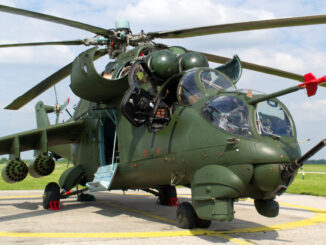 Cessna 152 (c/n 15282399, SP-NID, Aeroklub Ziemi Mazowieckiej), static display at Aeroplane, Helicopter and Autogyro Rally in Płock, August 2022.
Cessna 152 (c/n 15282399, SP-NID, Aeroklub Ziemi Mazowieckiej), static display at Aeroplane, Helicopter and Autogyro Rally in Płock, August 2022.
The Cessna 152 is a two-seat training and tourist aeroplane, introduced in 1977. It was created as direct development of the then already successful and proven Cessna 150, originating yet from the 1950s. The newly developed model, designated ´152´, was intended to be the Cessna company’s response to Piper Tomahawk and Beechcraft Skipper aeroplanes.
Among the most significant improvements that distinguished the Cessna 152 from its predecessor, was a slightly increased payload, achieved by rising the gross weight of the aircraft from 726 to 757 kilograms. In addition, a different engine was implemented. Two variants of Lycoming O-235 powerplant, used with the C152, were not only much quieter but also performed better on the then-new 100LL low-lead fuel, as well as had a longer time between overhauls.
Initially, the aircraft manufactured between 1977 and 1982 were equipped with O-235-L2C propulsion units, generating 110 hp. However, that engine had some lead-fouling problems and since 1983, it was replaced by O-235-N2C variant. That powerplant generated ´only´ 108 hp but, due to different design of pistons and combustion chamber, the aforementioned issue was reduced. Apart from that, and comparing to its predecessor, the Cessna 152 features a few other minor design changes, improving its performance, handling and flight characteristics.
In addition, there is a huge number of optional modifications for the Cessna 152 offered by various manufacturers. Among them, for example, there is a taildragger conversion, letting the aeroplane to operate from shorter runways and increasing its cruising speed by up to 19 kph.
With such optional modifications, it is also possible to increase the engine output up to 125 horsepower. However, probably the most interesting and popular optional modifications for this type of aircraft, are performance-improving STOL kits. Those, combined with the two previously mentioned upgrades, can make the Cessna 152 a genuine short take-off and landing aircraft.
Most of the Cessna 152s were built at the manufacturer’s plant in Wichita, Kansas. However, a certain number of the Cessna 152 aircraft were also produced on license in Europe, at Reims Aviation plant in France, under the designations F152 and FA152.
In addition to the standard version of the Cessna 152 (with 6628 examples built), three other factory variants of this aircraft were developed. They were, as follows: A152 Aerobat – capable of aerobatics with up to +6/-3 G (315 built); F152 – basic Model 152 built in France by Reims Aviation (552 built); FA152 Aerobat – Reims-built aerobatic capable version (89 built).
Moreover, there were three other sub-variants created, differing in equipment – a version with upgraded avionics and navigation, designated C152 II, a one with additional training equipment known as C152 T, as well as examples rebuilt or overhauled by Aviat Aircraft Inc. and then named C152 Aviat.
Nowadays, the Cessna 152 aeroplanes – along with four-seat Cessna 172 – are in common use by flight training organisations and private pilots all around the world. The fact that the C152s still can be spotted at so many airfields in virtually every region of the world makes that aircraft an absolute classic of General Aviation.
The Cessna 152 featured in our current Photo of the Week is the example owned and operated by Stowarzyszenie Aeroklub Ziemi Mazowieckiej (Mazovia Land Aeroclub Association) in Płock. This year, the aircraft could be seen at Zlot Samolotów, Śmigłowców i Wiatrakowców 2022 (Aeroplanes, Helicopters and Autogyros Rally 2022) organized on the occasion of the Polish Aviation Day. And that’s just where and when that photo was taken.



